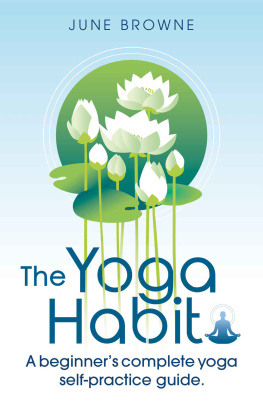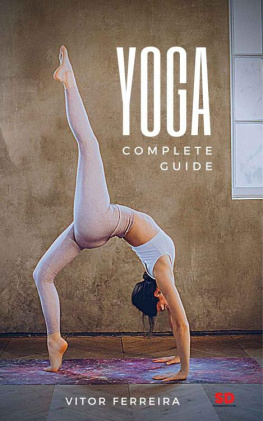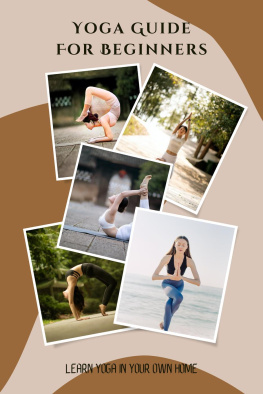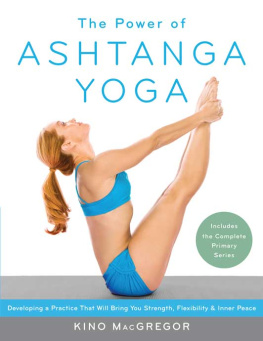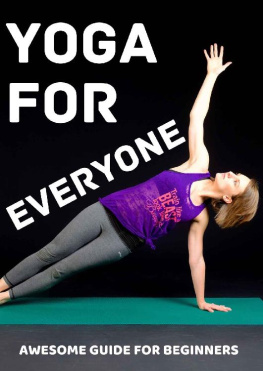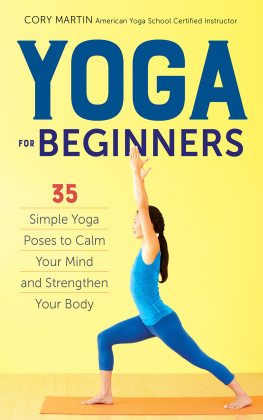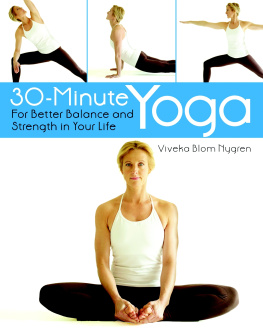The Yoga Habit
A Manual for Beginners
June Browne
Copyright 2021 - All rights reserved.
The content contained within this book may not be reproduced, duplicated or transmitted without direct written permission from the author or the publisher.
Under no circumstances will any blame or legal responsibility be held against the publisher, or author, for any damages, reparation, or monetary loss due to the information contained within this book, either directly or indirectly.
Legal Notice:
This book is copyright protected. It is only for personal use. You cannot amend, distribute, sell, use, quote or paraphrase any part, or the content within this book, without the consent of the author or publisher.
Disclaimer Notice:
Please note the information contained within this document is for educational and entertainment purposes only. All effort has been executed to present accurate, up to date, reliable, complete information. No warranties of any kind are declared or implied. Readers acknowledge that the author is not engaged in the rendering of legal, financial, medical or professional advice. The content within this book has been derived from various sources. Please consult a licensed professional before attempting any techniques outlined in this book.
By reading this document, the reader agrees that under no circumstances is the author responsible for any losses, direct or indirect, that are incurred as a result of the use of the information contained within this document, including, but not limited to, errors, omissions, or inaccuracies.
Table of Contents
Introduction
Yoga is a lifestyle and a way of being. It improves your health and sculpts your body, and is so much more than just about getting into a fancy backbend or touching your toes.
Although yoga isnt a religion, it can certainly be a spiritual practice. The very definition of yoga lies in union and connection. Its a way of slowing down, calming your thoughts, and coming home to yourself.
However, despite yogas popularity, very few people actually know and experience the full richness of the practice. Some choose to go to a studio for a few hours each week and that is enough for them. Other people yearn for something deeper and want to learn more. If youre reading this book, you may be one of these seekers. You may also simply have an interest in yoga that you are yet to explore!
Ill guide you along the path of yoga, covering everything from where it all started and the ancient yogic philosophies to some foundational poses, breathing techniques, locks, and the basics of sequencing. Youll learn how to put together your own series of poses and how to breathe properly as you move through these sequences. Well end this book with a guided visualization that you can use in your meditation at the end of each practice.
I hope that The Yoga Habit will be like a faithful friend on your yoga adventure. If you apply all you learn, you will inevitably feel more comfortable in your body and feel the positive effects ripple into every area of your life. Ultimately, yoga is about being the best possible version of yourself and feeling good and well. Laughter Yoga (Gendry, 2012) incorporates a song that highlights just the kind of energy I would like to share throughout this book. Lets take a look at the lyrics as a starting point.
Every little cell in my body is happy.
Every little cell in my body is well.
Feel so good.
Feel so well.
Every little cell in my body is well.
Now, lets get started on your yoga journey!
Chapter 1:
What Is Yoga?
What most of us know of yoga involves the practice of combining various poses or body postures in a sequence, and combining it with controlled breathing. Some say its a way of stretching stiff muscles, or a way to wind down after a hard day. We carry our mats into a studio, exercise our body, and leave an hour later.
The true essence of yoga, however, is much deeper.
The word yoga comes from the Sanskrit term yuj which means union or to join (Living, 2018). Yoga is a spiritual discipline that aims to unite an individual with divine or universal consciousness. It is also a powerful way to achieve harmony between your mind and body, and feel at one with nature and those around you. Its a practice that brings you home to yourself and aligns your body, your mind, and the energy you hold in your entire being.
Yoga moves way beyond poses on the mat and a few breathing techniques. In fact, as well soon see, this is only a small part of yoga. Yoga began as an entire way of being. For many, it is a lifestyle and a means of personal transformation. Ancient yogis adhered strictly to the various practices of yoga to achieve liberation and enlightenment.
Maharishi Patanjali based his yoga sutras on ancient sacred texts such as the Rigveda. The Rigveda was written around 8 to 10 thousand years ago and classical yoga forms part of this rich Vedic literature. Approximately 5,000 years ago, Patanjali compiled the Yoga Sutras within which he proposed eight limbs or aspects of yoga ( A Brief History of Yoga , 2020). Postures and breathwork make up only two of these eight essential components of the practice. It just goes to show yoga is so much more than we first realized.
Lets go deeper, shall we?
The Eight Limbs of Yoga
Pantanjalis Yoga Sutras speak about the eightfold path to enlightenment. This path is referred to as ashtanga, which translated means eight limbs.
These are essentially eight steps or guidelines on how to live a purposeful life that will result in the souls liberation. They include all aspects of moral and ethical conduct and self-discipline, and acknowledge both physical and spiritual aspects of our nature.
A true yoga practitioner doesnt just practice the poses, but tries to live by all eight limbs. Lets take a closer look at what each of them involves.
1. Restraints (Yamas)
The yamas are ethical standards by which we should live. They provide us with a sense of integrity and focus on our individual behavior and how we conduct ourselves. The yamas are universal practices and relate to how we treat others. They are principles we should align ourselves with and adhere to as much as possible.
There are five different yamas:
Ahimsa, which means non-violence.
Satya, which means honesty and truthfulness.
Asteya, which is non-stealing.
Brahmacharya, which means using your energy correctly.
Aparigraha, which means non-covetousness.
2. Self-Discipline (Niyamas)
The second limb includes the niyamas which have to do with spiritual observances and self-discipline. Examples of niyamas in practice include having a daily shower, doing self-inquiry and reflection, and developing a meditation practice.
These are the five niyamas:
Saucha, which means cleanliness.
Santosha, which means contentment despite circumstance.
Tapas refers to heat and spiritual austerities (burning away of desire).
Svadhyaya is the study of sacred scriptures and self-reflection.
Isvara pranidhana is a complete surrender to God.
3. Poses (Asanas)
The third limb includes the asanas (poses) which are the yoga postures you perform on your mat. This is what most of us have come to know as yoga. In ancient yogic philosophy, the body is considered a temple of the spirit. Taking care of the body is a sacred practice. By practicing asanas, you will develop a strong habit of discipline, improve your concentration, and through these attributes, be more successful with meditation.
Next page
